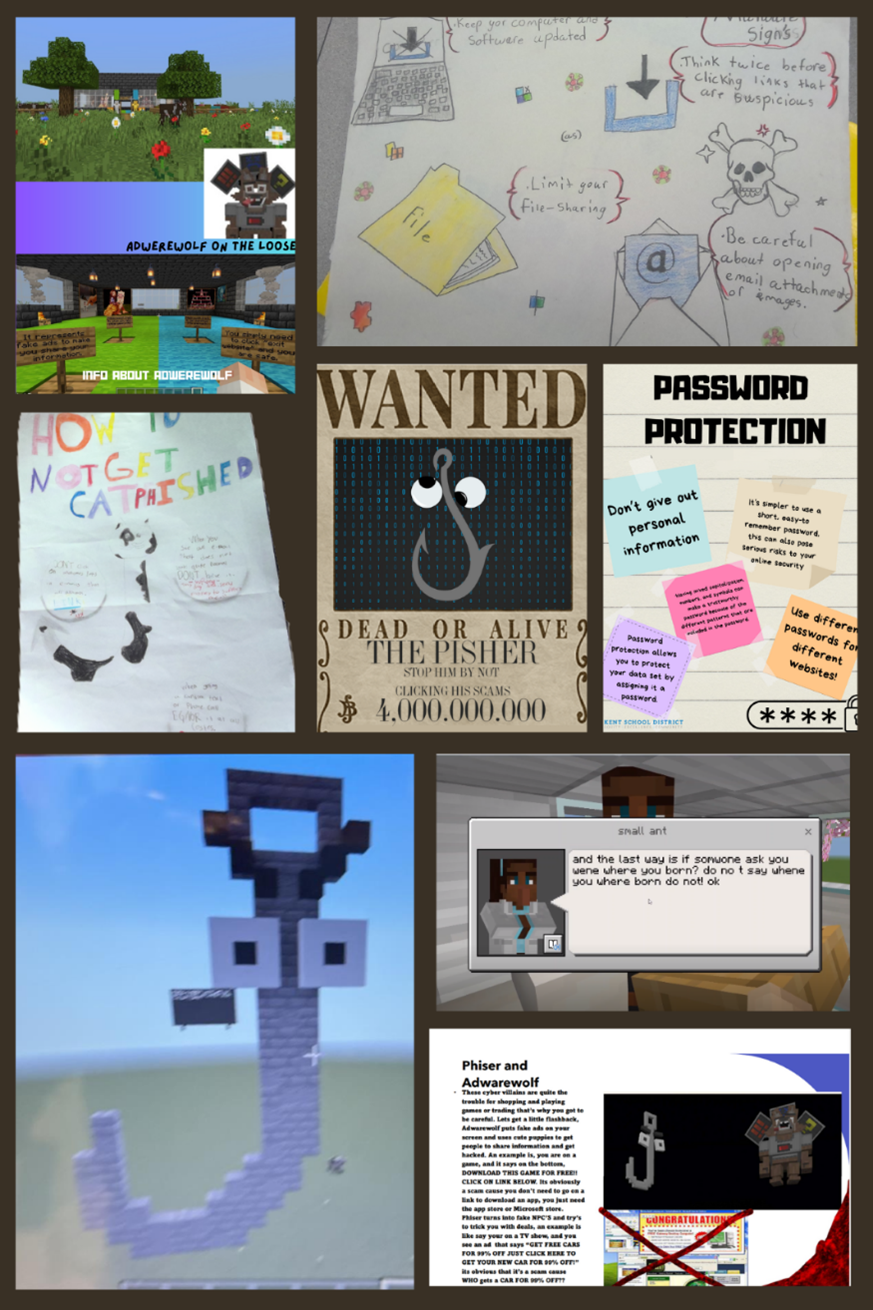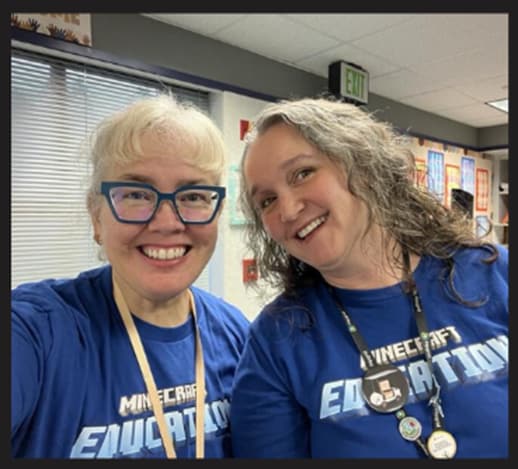Defeating Cyber Villains: Helping Student Stay Safe Online with Minecraft Education
18 Mar 2024

Guest blog by Melissa Cook and Megan Heineman
18 Mar 2024

Guest blog by Melissa Cook and Megan Heineman
Our district has experienced a surge in phishing schemes lately. In response to this, our Information Security Team requested our assistance in educating students and staff about cyber security principles. We decided to use the Minecraft Education Cyber Fundamentals: Network Heroes world to intentionally target our 4th through 8thgrade students and educators.
We decided to target a few teachers who we knew were innovators in their classrooms and open to trying new things. We pushed into these classrooms and introduced the Minecraft lesson to students. They loved exploring the world, meeting the different cyber villains, and learning how to defeat them.
Upon entering the world students start by learning about various network components and data encryption and are introduced to their first villain, the Packet Thief. After defeating the Packet Thief students encountered their next cyber threat when the Dictionary Attacker attempts to determine their password leading students to discover the importance of creating strong password entropy, how strong and unpredictable a password is (entropy is an example of the rich vocabulary that students encounter throughout the world). Students are transported to their third mission where they meet Adwarewolf, his pup-ups, and the Phisher. As students meet the villains, they are inundated with pop-up ads and clever phishing schemes forcing them to decide whether it is in their best interest to click on the links or not. Here the students are building on their cyber-savvy skills. Throughout the journey students are reflecting on their learning either inside Minecraft using the book & quill or in the lesson’s student workbook.
We didn’t want the learning to stop once they were finished in the world. We wanted to capitalize on the students’ excitement and engagement about what they had just learned and give them an opportunity to teach their families and peers about their newfound cyber security skills. So we created a campaign for students to participate in where they created a Public Service Announcement (PSA) that would teach others how to be more cyber secure using the theme of defeating the villains. This accomplished three goals:
We worked with the teachers to create a simple rubric to ensure students addressed the project's learning targets. Students chose a medium they felt most comfortable working with for creating their PSAs. Some used paper and pencil or digital resources such as Canva and PowerPoint. Quite a few created their PSAs within Minecraft, making NPCs for users to interact with to learn more about Cyber Security.

Our district’s Information Security team was so impressed with the quality of student work and the information that students gleaned from playing the Minecraft Network Heroes world. They said, “The students heard the message that today’s connected technology is exciting and has amazing benefits, but we do need to be cautious at the same time, as there are bad actors that are looking to take advantage of our excitement and good nature. The students also understood the messages included in the Minecraft Challenges that there are sometimes little clues that might be dismissed on their own, but when put together, may reveal that they were smaller parts of a larger puzzle.”
We have shared the students’ work across our district website and social media to promote cyber security safety to others. As acknowledgement of the student’s powerful learning, they received certificates for completing the Minecraft world and stickers that we had created for the campaign. Our goal is to continue to highlight this first campaign to help us promote and launch a spring campaign so we can continue to increase cyber security awareness across our district, especially given the feedback from some of the teachers we worked with:
We hope that by sharing our district’s campaign, more students and staff will become aware of the importance of cyber security and learn how to protect themselves from phishing schemes, malware, and other cyber threats. Moreover, we hope this project helps others see the importance of game-based learning and how Minecraft Education is a powerful tool in supporting student learning.
Melissa Cook and Megan Heineman are Digital Learning Coaches for Kent School District
